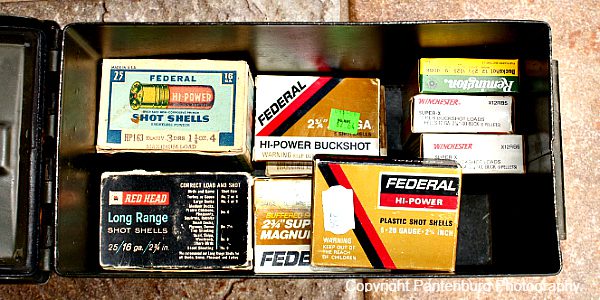

This is an excellent chance to fire the ‘old’ ammo in a practice session to keep you accustomed to how your carry ammunition responds. Many would advocate for swopping the ammo at least once a year, with a preference of around six months. It is strongly advised that you recycle or change your carry ammunition regularly. If you carry a weapon daily, concealed or open, you need to be aware that the ammunition in that weapon is along for the ride through dust, BBQ ash, beer spills, heat, cold, rain, sweat, and tears. Remember To Recycle Your Carry Ammunition Here is a handy video on ammo shelf life and storage: So, keep your ammo in your ammo boxes and perhaps give them space at the bottom of your wardrobe. The sun is vicious and, with enough time, it will degrade all in its gaze of glory. It’s also great practice to keep your ammo out of direct sunlight exposure. Your house may also be equipped with climate control, making it a better option for a storage site. This means that the garage or attic isn’t necessarily the best option for storage as they generally aren’t as well insulated as your house.

You will want to limit temperature fluctuations around your ammo storage as much as possible. Granted, the same goes for unopened boxes, but the boxes will take up more space. Knowing how many rounds you put in a vacuum pack makes it easy to know how many cartridges you have left in your storage just from counting the packets. This is not only a great option to keep it more protected from elements, including dust and dirt, but it also helps you keep your ammo organized. Vacuum Seal Your AmmoĪn alternative, or even additional option, is to vacuum seal your ammunition. Even if your ammo box does have a gasket, this is still a good idea. Toss a few silica-gel packets (like the ones in packaging boxes) in the box to help absorb the moisture. If you can’t find one with a gasket or already own one that doesn’t have one, then there is a pro-tip you can use. When looking for an ammo box, make sure to look for one that has a rubber gasket in the lid which will further keep your precious ammo stash separated from the nasty elements. More modern options are plastic, which is also less vulnerable to the elements than metal. Use Ammo BoxesĪmmo boxes have been a tried and tested method of storing ammunition for many years. That’s ammo from the second South African Anglo Boer War, and they shot fine. In fact, we have been fortunate to fire many weird and wonderful weapons, with the most recent being an old Lee Enfield 303 dated back to 1918. Properly storing your ammo can extend its shelf life indefinitely. As the name suggests, these crystals will add extra “boom” to your boomstick: probably more than you want.Īs scary as firing bad ammunition sounds, there are fortunately ways to prevent ammo from going bad through proper storage. There is also the potential for a chemical reaction inside the case, which forms explosive crystals.A beginner may not recognize a squib round and be tempted to fire a follow-up shot, which is obviously a bad choice. Squib loads are rounds that are underpowered and get stuck in the barrel. When moisture has degraded the powder inside the case, it can lead to squib loads.As a result, firing these rounds can lead to the case exploding and damaging your weapon or yourself. When ammo is corroded, the structural integrity of the casing is likely compromised.Ammunition that has oxidized is technically still relatively safe to shoot, but it will make your gun very dirty, leading to other complications during a day on the range.There are a few real dangers associated with firing degraded ammunition. Corrosion results from the formation of brass salts and will almost certainly degrade the quality and integrity of the casing. In more advanced stages, you will likely see green patches forming outside the case.Īn even more severe sign to look for is when oxidation has become corrosion, which will appear in a chalky-white layer. This is caused by early oxidation setting in. Lighter forms of exposure will usually present in the case turning from that beautifully-shiny brass to a dull or even slightly matt-greyed appearance. When ammunition has been exposed to condensation and other elements for a long time, there are usually pretty obvious tell-tale signs. Thermal shock occurs during rapid or drastic changes in ambient temperature, leading to condensation forming outside or inside the brass case. In the context of ammunition storage and shelf life, moisture is caused by an effect known as “thermal shock.”

Where there is moisture, there is oxidation and rust. The biggest natural enemy of ammunition is moisture.


 0 kommentar(er)
0 kommentar(er)
